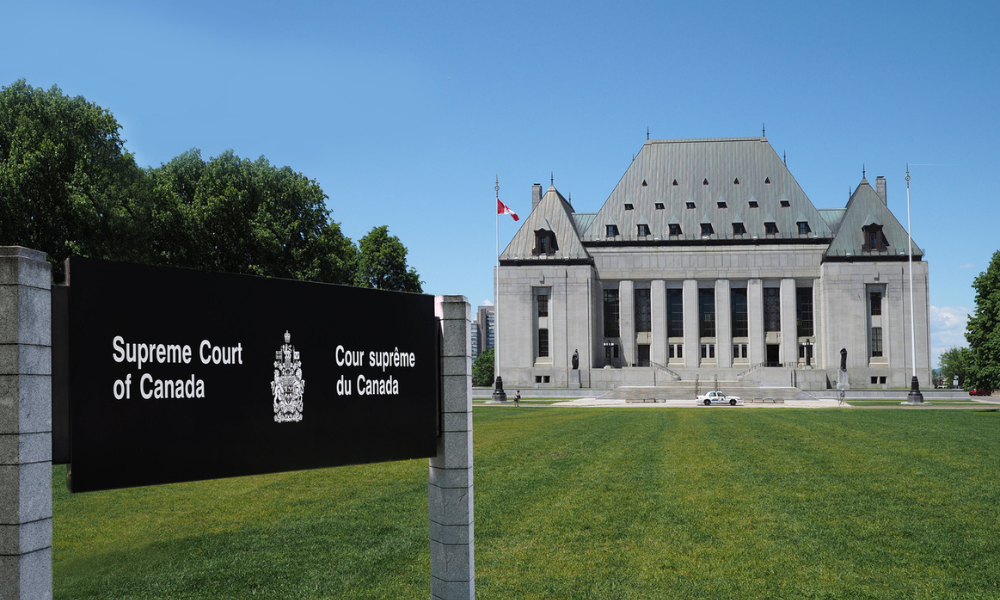In the first such Quebec case to be decided by the Supreme Court of Canada, a landowner’s bylaw challenge was found to be prescribed by a time limitation, but the court has allowed the case to continue in Quebec’s Superior Court on the unresolved claims, including for an indemnity of disguised expropriation.

In the first such Quebec case to be decided by the Supreme Court of Canada, a landowner’s bylaw challenge was found to be prescribed by a time limitation, but the court has allowed the case to continue in Quebec’s Superior Court on the unresolved claims, including for an indemnity of disguised expropriation.
In Ville de Lorraine et al. v. 2646-8926 Québec inc., the Supreme Court overturned a Quebec Court of Appeal ruling that found inoperable municipal bylaws that changed the zoning of land in order to create a conservation zone on land owned by the respondent, who had waited some years to challenge the bylaw.
“The alleged abuse of [municipal] power did not have the effect of relieving the plaintiff of its duty of diligence, that is, the requirement that the plaintiff institute its action within a reasonable time,” Chief Justice Richard Wagner wrote on behalf of the court.
However, Wagner wrote, “[A] plaintiff who no longer meets the conditions for applying for judicial review still has the right . . . in appropriate cases and if the claim is supported by the evidence, to seek payment of an indemnity for disguised expropriation. This case can continue in the Superior Court on the claims that remain unresolved, including the claim for an indemnity for disguised expropriation.”
On July 7, 1989, the respondent 2646-8926 Québec inc. paid $1,286,000 to purchase land in a residential zone of the appellant town of Lorraine. In 1991, the town passed a bylaw (bylaw U-91, replaced in 2010 by bylaw URB-03) that changed the zoning for 60 per cent of the respondent’s land in order to create a conservation zone, thereby preventing any residential development on that part of the land. In late 2001 or early 2002, the respondent’s majority shareholder learned of the bylaw and discovered that the appellant had established infrastructures for hiking and cross-country skiing on part of its land.
After contacting the town of Lorraine, which refused to amend its bylaw, the respondent brought an action in nullity against the bylaw in November 2007, seeking damages and the removal of the infrastructures. It also brought an action in nullity against bylaw 10-02 of the appellant regional county municipality of Thérèse-De Blainville, which implemented a development plan that also changed the zoning for the respondent’s land.
In the Superior Court of Quebec, Justice Benoît Emery ruled in favour of the municipalities in July 2015, citing in part the delay in the respondent bringing the case to court; but his decision was overturned by the Court of Appeal of Quebec in November 2016.
Sixteen years had elapsed between the adoption of bylaw U‑91 and its being contested in court, the Supreme Court noted in today’s judgment, and the time that elapsed after the company’s majority shareholder had acquired factual knowledge of the bylaw was at least five years. “Given the discretionary nature of the Superior Court’s power of judicial review, that five‑year period was in itself sufficient for that court to dismiss the action in nullity for being out of time.”
The Supreme Court’s decision in the case is both a win and a loss for the respondent, says Nikolas Blanchette, a partner in Fasken Martineau DuMoulin LLP in Montreal who acted for an intervener in the case, the Québec Association of Construction and Housing Professionals Inc.
“There are many ongoing cases regarding expropriation” of land in Quebec under similar circumstances, Blanchette told Legal Feeds. “So we see [this Supreme Court decision] as an opening.” First, there is a recognition that there are two remedies for landowners in such cases, he says; the first is that they can bring an action for nullity of a bylaw that has the effect of infringing on the development of their land within a reasonable time frame; and second, the decision has confirmed that there is “an opening to seek an indemnity for expropriation,” through the award of damages to landowners for loss of land use.
In the Supreme Court ruling in Canadian Pacific Railway Co. v. Vancouver (City), the court wrote, “For a de facto taking requiring compensation at common law, two requirements must be met: (1) an acquisition of a beneficial interest in the property or flowing from it and (2) removal of all reasonable uses of the property.” In contrast, says Blanchette, “the ruling rendered this morning states, more simply, that disguised expropriation results ‘[w]here a municipal government limits the enjoyment of the attributes of the right of ownership of property to such a degree that the person entitled to enjoy those attributes is de facto expropriated from them [. . .].’”
Blanchette told Legal Feeds that the focus of today’s decision “is on the loss of the attributes of the right of ownership, rather than the acquisition of a beneficial interest in the property on the government’s part.”
The Supreme Court referred several times in its decision to a leading Quebec case, Benjamin c. Montréal (Ville), 2003 CanLII 33374. In that case, the Quebec Court of Appeal held that, even though the plaintiff had not brought a direct action in nullity to remedy the alleged disguised expropriation of his property, it was open to him to bring an action to claim an indemnity. That was confirmed in today’s decision in Ville de Lorraine.
“Even where a plaintiff no longer meets the conditions for applying for judicial review, he or she still has the right, in appropriate cases and if the claim is supported by the evidence, to seek payment of an indemnity for disguised expropriation,” Wagner wrote.
For many landowners, seeking damages for loss of use of their land that has been effectively expropriated for green space, for example, may be the simpler solution, Blanchette suggests. In any event, he says, today’s Supreme Court decision confirmed that “it’s clear that Benjamin stands in Quebec; it’s important case law for [land]owners.”










